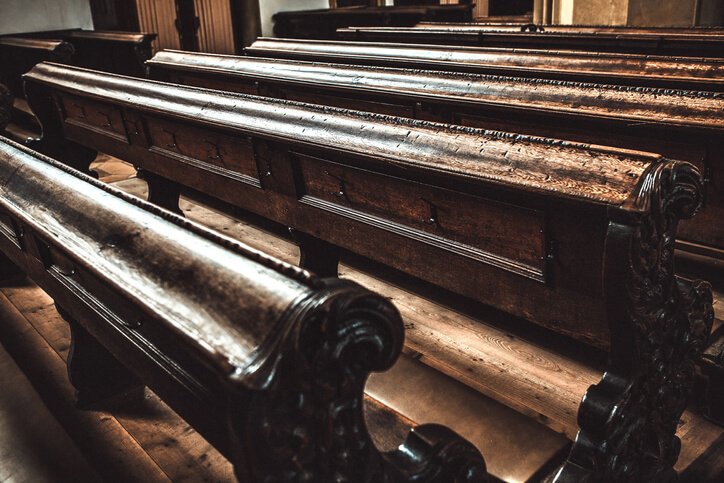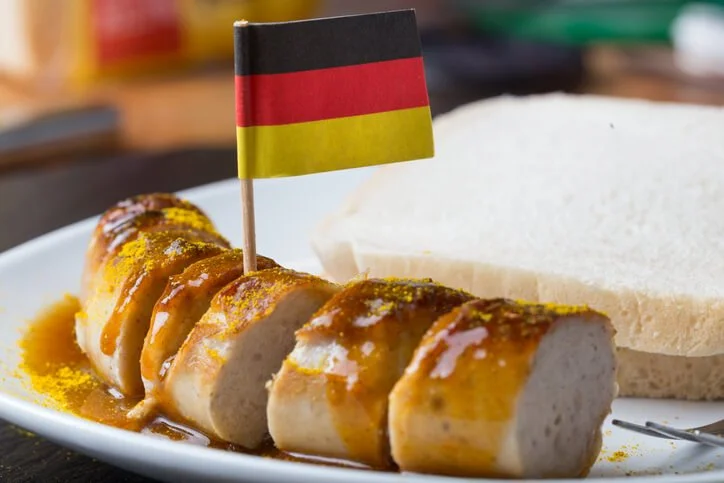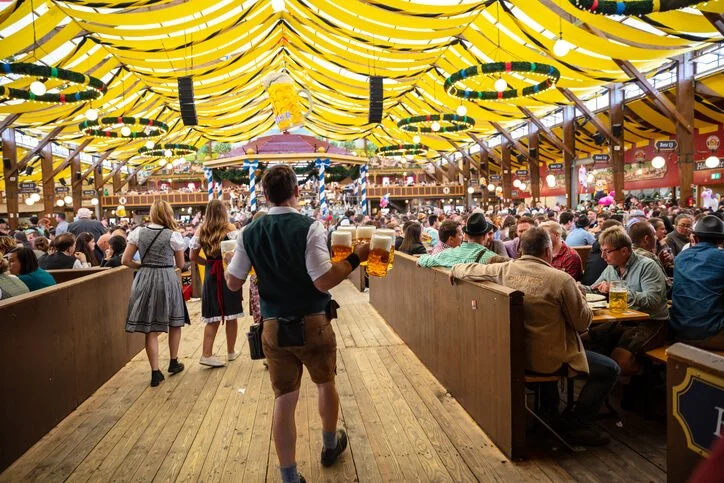German Influence On Texan Culture
Discover > Truly Texan > German Influence On Texan Culture
Being German and having lived in Texas for quite a while I naturally recognized the influence of german culture all over the vast state. I had to wonder where it stemmed from. What made the US such a desirable location for migrants at the time? Who were the first Germans to migrate to America? And how deep their culture runs up to this day.
The presence of their work is everywhere from agriculture to food to last names and even dialects that are exclusive to some tiny communities made up of the descendants of Germans, Dutch, and Norwegian immigrants. These are some of the marks the first German immigrants left in Texas, and there are a lot more.
History
Immigration of Germans to Texas began between 1836 and 1846 following the establishment of the Adelsverein 1842. The Adelsverein was a society found for the Protection of German immigrants in Texas. The society was founded by 21 German noblemen at Biebrich am rhein, a city around 20 miles west of Frankfurt. The Adelsverein helped establish colonies in Texas including the purchasing of the Fisher-Miller Land Grant, 5000 square miles between the Llano and Colorado River. Originally granted to Henry Francis Fisher and Burchard Miller then sold to the Adelsverein society in June of 1844.
At first, immigrating to the Comancheria was dangerous due to the hostility of both the land and the tribes there. The first commissioner of the Adelsverein, Prince Carl of Solms-Braunfels failed to colonize the land grant. The responsibility fell onto his successor John O. Meusebach, who successfully managed to negotiate a treaty with the Penateka Comanche tribe in 1847 allowing the first wave of German immigrants to enter the United States.
Germans did not find what they expected in The New Frontier due To the fact that the Adelsverein was relatively poor and filed for bankruptcy shortly after migration began. Instead of riches, freedom, and year-round nice weather, most had to resort to farming and other hard labor, even in the biting cold winters. Thankfully the Germans were hard-working, disciplined, and creative people that revolutionized Industries across the state such as carpentry, agriculture, cattle ranching, railroads, and technology.
Religion
Throughout the mid 17th and 19th century the primary religion in Germany was protestant, either Lutherans or Calvinists. After a movement trying to unify the Lutherans and Calvinists under the Evangelical Church of the Prussian Union. While the churches themselves bought about the movement, the anointed king at the time Frederick William III, has other visions. He wanted to oversee the unification entirely on his own terms, without the church’s consultation. The end goal was for royalty to have fully centralized royal control of all Protestant churches in Prussia at the time. Naturally, during this time period, this would impose forced conversion onto all the people in the Prussian empire. With that came resistance and tens of thousands of ‘Old Lutherans’ (Lutherans that have been following the same teaching since the days of Luther) were outlawed and forced underground, or to migrate to Australia and the United States.
What did this mean for Texas? Well given that today around 50% of Texans are protestants I’d say it left a pretty big mark. I mean granted most of Europe was protestant during the Victorian era when mass German migration first began. Even so when, even if you’re not in an area synonymous with german culture, it wouldn’t be out of the blue to find a church particularly with some German features. One example is St. Mary’s Catholic Church in High Hill, built-in 1906. It’s very obvious Gothic Revival style points to that fo Germany during the 19th and 20th centuries.
Texan Culture and Its Czech Influence
Uncover the Czech influence woven into the fabric of Texan culture. Explore how this unique blend has shaped Texan traditions, cuisine, and the essence of true Texas living.
Food
Germans ate a lot of food. Not only were their dishes heavier consisting of a lot of meat and carbs, they normally around 5 meals per day. They ate breakfast, lunch, and supper along with two smaller meals in between. Traditional German culture is most prevalent in old German towns such as Fredericksburg, where traditional travel culture is most amplified through food and architecture.
Sausages like bratwursts and frankfurters, meats like veal and pork as well as their recipes, baked goods like strudel, potato dishes, fried dishes, and of course sauerkraut (how long does sauerkraut last?) were just some of the main staples of a German diet, and of course, they bought it to America. Today there are thousands of german inspired dishes and food establishments in Texas. Some even dating back to the original German immigrants during the great migration.
Of course, Texas would never be the same without the heavenly art of lager brewing hadn’t been introduced to them. Lager is a german word and a traditionally german art which they taught the already settled New Americans who had up until then made things like persimmon beer and potato beer. Today one of the most well recognized and best beers in Texas is german. Shiner is made by an old German brewery founded in 1909 called the Spoetzl Brewery. It’s the oldest independent brewery in Texas and tradition runs strong in that place.
Meat Science in the Everyman's Kitchen
Embark on a journey through meat science as it unfolds in the everyman's kitchen. Discover the secrets and techniques that elevate your home cooking to the next level.
Architecture & Old German Towns
It should come as no surprise that these days signs of German architecture are most prominent in places where the German settled such as Fredericksburg, New Braunfels, and Boerne. You'll see the strongest influence on almost any church still standing in the areas where Germans settled. One of the best examples of this St Mary's Catholic Church in Fredericksburg. The church was built in 1848. In 1861 it was replaced by a stone building completed in 1863. A new church was built in 1906 right next to the original one due to its small size and they can still be found right next to each other on West San Antonio Street today.
Although many towns and communities whose names ring German, the three that Texas is synonymous with are Fredericksburg, founded in 1846 it sits around 65 miles west of Austin with a current population of 11,000. Fredericksburg is the peach capital of Texas and is also knows for its wineries and stunning wildflowers. New Braunfels, founded 1845, current population 60,000 lies 30 miles north-east of San Antonio. The town was founded by the commissioner-general of the Adelsverein himself, Prince Carl of Solms-Braunfels. He named it after his home in Germany, Solms-Braunfels. Boerne, founded in 1852, with a current population of 11,000 people. The town was built on the backs of the free thinkers of the time. Utopians who believed in peace and equal rights for all. They enjoyed conversing in Latin and having deep conversations about music, literature, philosophy, and science. Each town is flooded with german cultural references from farms and restaurants, to housing and churches, and arguably the best part; the food.
Folk Festivals
Oktoberfest is the biggest german folk event in Texas. It’s a 210-year-old tradition that originates in Munich and draws over 100,000 people in the state to celebrate. Celebrate what though? A lot of people who attend Oktoberfest don’t know why. In 1810 the then ruler of Germany King Ludwig I married Princess Therese of Saxe-Hildburghausen on 12 October. The entire town was invited and they enjoyed the royal event on lush fields in front of the city gates. Some festivities included horse racing, carnivals, music, dancing, & yodeling, eating, and of course, beer. Beer is such an important factor that in Munich you can’t drink any beer that has been made outside the city gates. It became an official annual event in 1819 where it grew larger and larger every year.
The largest german festival that takes place in texas is the Wurstfest in New Braunfels. It hosts over 100,000 hungry visitors over a 10-day festival in November. Guests come to eat sausage, drink beer, and take in Germany’s oldest traditions. It started at the hand of a veteran meat inspector called Ed Grist. He created the first festival in New Braunfels in 1961, in honor of sausages. The festival was an immediate success attracting 2,000 people that year. I continued to grow exponentially every year after 1961. By 1964 over 30,000 people were coming to attend the 10-day event where they ate a total of 5,000 pounds of sausage. In ‘66, 35,00 people attended, ‘67 saw numbers over 40,000, until eventually, it grew to the massive ordeal it is today. Schützenfeste and saengerfest are two of the other multiple traditions still kept alive in texas's heritage today.
Texas BBQ: What It Is and Where It Came From
Delve into the smoky world of Texas BBQ and uncover its rich heritage. Learn what makes Texas BBQ a culinary masterpiece and explore its origins.
German Texans Today
Germans bought an incredibly rich heritage to their new home in Central Texas. They came in large numbers in the mid 19th century carrying everything they had on their person. Combined they created a culture unlike any other with its own languages, dialects, traditions, instruments, recipes, architecture, and belief system. There are 82,000 german speakers spread across texas today, and even more with german bloodlines. None of these festivals and traditions are looking to die out very soon. Proof that the germans cemented their heritage in Texan culture forever.







